Boldly, Nobly and Independent: Retracing BYU football’s return from obscurity to national prominence
Story and graphics by Joseph Hovey
It was a clouded, chilly mid-November matinee at War Memorial Stadium in Laramie, Wyoming. David Allen sat among the swaths of navy blue-clad fans to watch his son, Matt, take the field with BYU in the 2007 edition of its Mountain West Conference showdown with the Wyoming Cowboys. Matt made his dad’s trip well worth it when, in the second quarter, the younger Allen hauled in a three-yard touchdown to give the Cougars a 14-0 advantage.
In the moments after Matt’s touchdown catch, BYU cameras would capture David’s reaction in the stands.
“I’ve got to send a text to his brother, he has to find out!” David exclaimed as he began to thumb a message on his flip phone. “He can’t get The Mtn. in Arizona, you know.”
Whoa. Tap the breaks. What was that?
“The Mtn.” refers to the Mountain West’s short-lived (2006-11) television network, the network behind the cameras that day in Laramie. Due to contractual complexities and hollow promises, its distribution was limited to a precious few homes along the intermountain west. Thus, David Allen sat among the patchwork of blue and brown at War Memorial and texted another son to celebrate Matt’s score.
Unfortunately for BYU and the Mountain West Conference, the predicament illustrated here by the Allen family encapsulates a frustratingly crucial time for Cougar football, its fans’ access and its opportunity for exposure on the national scene.
In November 2007, the Bronco Mendenhall-led Cougars were in the midst of magical times. Not only were they en route to a second consecutive conference title, but from 2006 to 2009, the resurgent program piled up 43 wins to just nine losses and finished ranked in the AP top 25 in each of those seasons.

BYU was led by quarterback Max Hall, the man who became the Cougars’ all-time winningest signal-caller. Two future Super Bowl pass-catchers stretched the sideline in Austin Collie and Dennis Pitta. The program’s eventual all-time leading rusher, Harvey Unga, ran between the tackles.
If a tree falls in the forest and nobody’s there to hear it, does it make a sound?
Unfortunately for BYU and the Mountain West, few would hear it.
As a result, less than three years later, BYU made a decision that would alter the course of the program forever.
That decision galvanized a national fanbase like never before, unleashed unprecedented national exposure for the team and institution and opened doors to a new era once only dreamt of in Provo.
This is the story of BYU football’s era of independence, why it happened, what it accomplished and what comes next.
A Tradition of Access and Exposure
Despite a 32-yard touchdown reception from Phil Oyler in the fourth quarter, BYU fell 33-32 at Utah.
Are you familiar with that game? Most BYU fans would say, “Who the heck is Phil Oyler?”
That’s because Oyler played for the Cougars in the early 1950s. In this case, Oyler’s near game-tying heroics came in the BYU-Utah rivalry matchup on Thanksgiving Day, 1953. It was the first live televised college football game in the Rocky Mountains.
Duff Tittle, BYU senior director of athletic communications, has worked with the program since 1996 while spending years researching and documenting its history. Tittle points to this 1953 game as the beginning of BYU’s national access and exposure.
“I believe, from the research I’ve done, that that game was watched by nearly 60 million people,” Tittle said. “There were only a handful of national networks at that time, and it was broadcast on NBC who owned the rights.”
Twenty years later, LaVell Edwards and offensive magicians Dewey Warren and Doug Scovil would arrive in Provo. Edwards, his assistant coaches and legendary players such as Gifford Nielsen, Marc Wilson and Jim McMahon would take the Cougars to new heights on the field. Off the field, the nation was starting to take notice.
“As we moved into the 1970s and had this exciting brand of football, there was this real desire amongst television networks to put us on,” Tittle said. “The Western Athletic Conference was crazy back then; the points were rolling and it seemed like no one played defense.”
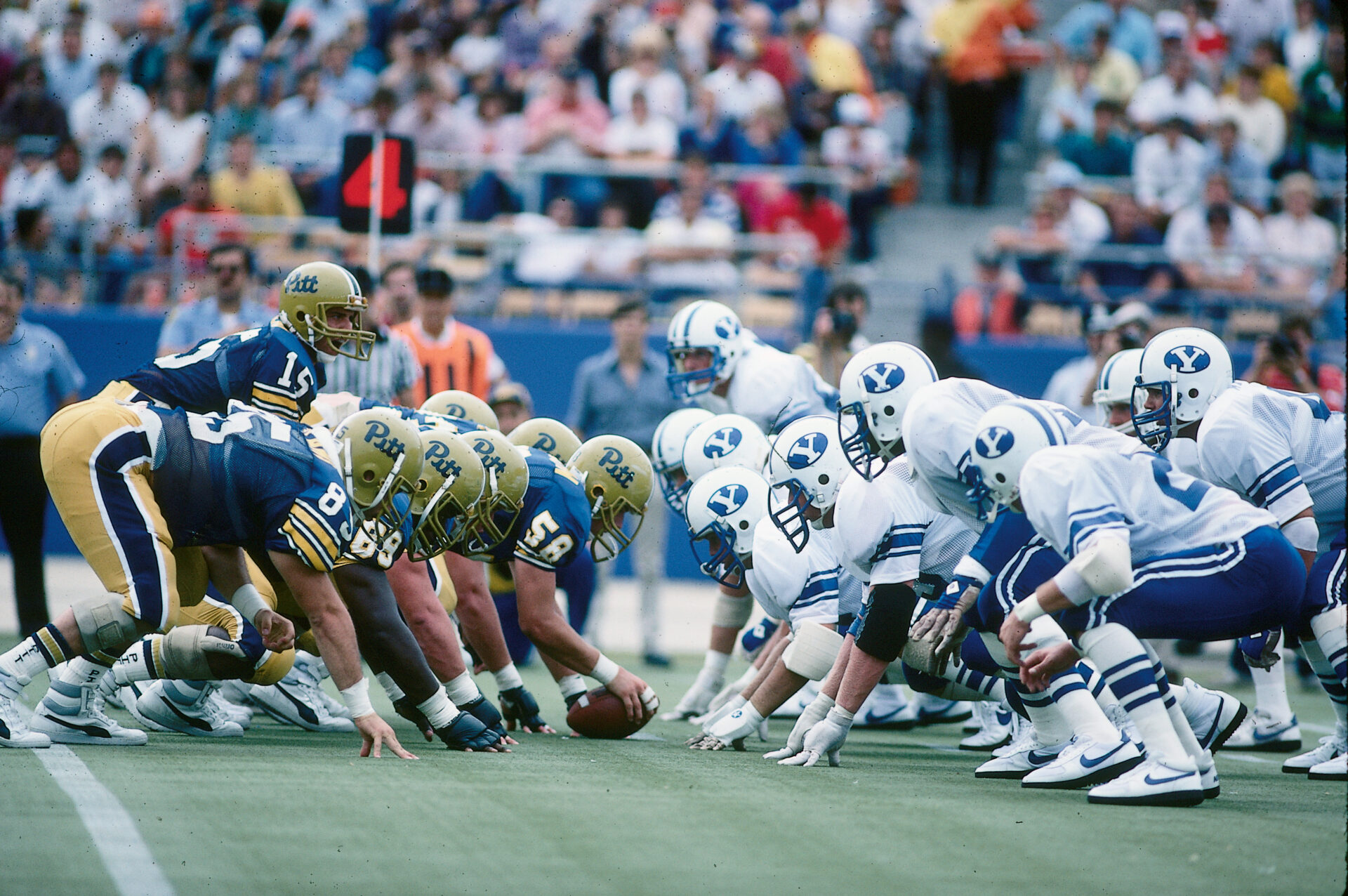
With a fun brand of football came increasing demand for the Cougars’ games to be played before increasingly large audiences. This culminated in a seminal moment for both BYU and ESPN on Sept. 1, 1984, when unranked BYU upset No. 3 Pitt 20-14 in the network’s first-ever regular season live college football broadcast.
Following the win over Pitt, the visible and victorious Cougars would vault up the AP polls on the way to the 1984 National Championship.
A relationship was forged.
BYU and ESPN partnered to bring college football and Cougar fans across the nation a host of memorable moments. It was under ESPN cameras and a national spotlight that Ty Detmer threw for 576 yards against No. 18 Penn State in the 1989 Holiday Bowl. The nation tuned to ESPN and was dazzled as Detmer dumbfounded Miami defenders in the Cougars’ 28-21 upset of the No. 1 Hurricanes in 1990. Detmer and San Diego State’s Marshall Faulk put on a firework display for ESPN cameras as the WAC foes battled to a 52-52 deadlock in 1991.


Success ran congruent with the Cougars’ exposure. A national championship, Heisman Trophy Winner, two Outland Trophy recipients and a Cotton Bowl title are but a smattering of the accolades BYU garnered while ESPN’s darling of the 1980s and early 1990s.
When Cougar fans couldn’t catch the team on ESPN, The Church of Jesus Christ of Latter-day Saints provided an alternative method. In the heart of the Edwards era, BYU fans around the country gathered in their local meetinghouses to watch the games broadcast over the Church’s satellite system.
“Because it was being broadcast all over the country, alumni and members of the faith could gather to watch games at their stake center,” Tittle said. “In my mind, that became the genesis of Cougar nation.”
As a fixture on ESPN and with a fan base hungry for access, how did BYU end up confined to an upstart conference network in 2007?
Wandering in the Mountain West wilderness
After over a decade of conference stability, the nine-team WAC began to expand in 1992 with the addition of Fresno State. San Jose State, Rice, SMU, TCU, Tulsa and UNLV came along a few years later, bloating the WAC to a super conference of 16 by 1996.
“The WAC started to bring in teams and the concept was that we would be much more visible and more attractive for television contracts if we had all of these eyeballs from some of the larger television markets,” Tittle said.
There was one major problem with the WAC’s expansion plan. While more teams looked nice on paper, it didn’t necessarily equate to increased viewership. Take San Jose State for instance. The Spartans may play in the Bay Area, but their popularity comes somewhere down the list below the many San Francisco professional teams along with Pac-12 stalwarts Stanford and Cal.
“San Jose State may have been in the San Francisco television market, but no one was really watching,” Tittle said. “WAC expansion just diluted the money for everyone, especially for BYU.”
In the years to come, WAC university presidents rallied around the idea of a break-off to create what would come to be known as the Mountain West Conference.
The new league would set sail in 1999 and play its very first conference matchup before a national audience on ESPN as BYU hosted No. 23 Colorado State.
Despite the start on ESPN, it wasn’t long before the idea of a conference TV network emerged. The idea materialized in 2006 with the founding of The Mtn. While the Comcast-backed network played home to BYU highlights such as Beck to Harline or Collie’s “magic happens” 4th-and-18 reception, it did so to a limited audience.
“The reality of it was that there was no distribution,” Tittle said. “This idea that we were going to get The Mtn. on Dish and DirecTV never materialized.
“He can’t get The Mtn. in Arizona, you know.”
With the limited distribution of The Mtn., Cougar nation’s access to its team suffered, as did BYU’s opportunities for national exposure.
Former BYU wide receiver Nate Meikle remembers that time with frustration.
“There was this crazy time where people in Idaho Falls couldn’t even watch the games on TV,” Meikle said. “How crazy is that?”

Following one-score losses at Arizona and No. 23 Boston College in two of their first three games, Meikle’s 2006 Cougars ran the table with wins at No. 17 TCU and Utah, along with victories at home by an average margin of 35 points. Yet, BYU went unranked until November 9.
“We had this really strong team that’s blowing others out, but we’re playing on The Mtn., so nobody sees the games,” Meikle said. “If we had been playing on ESPN in every one of those games, I’m almost certain we would have been ranked much sooner and much higher.”
Tittle recalls the gut-wrenching moment when he was told why BYU star tight end Dennis Pitta went without the John Mackey Award in 2008 and 2009.
“I felt really bad. I still do,” Tittle said. “Pitta should’ve won the Mackey Award in one of those two years, but we were told by the committee, ‘Sorry, we didn’t see him play.’”
Thus, the 2009 Consensus All-American went without college football’s highest honor for a tight end.
The numbers say it all. In 12 seasons with the Mountain West, BYU played 45 games on national TV (ESPN, ESPN2, ABC, NBC or FOX). Prior to the launch of The Mtn., that equaled an average of 5.1 games per season (1999-2005). From 2006 to 2010, the Cougars averaged a meager 1.8 opportunities per season on national TV.
BYU athletic director Tom Holmoe knew something had to be done.
“The Mtn. wasn’t robust enough to get our games to our fans,” Holmoe said. “We experienced that for a couple of years and then told the Mountain West, ‘We can’t do this. You either have to change this, or something’s going to happen.’ That something was that we had to leave.”
Access, Exposure, Independence
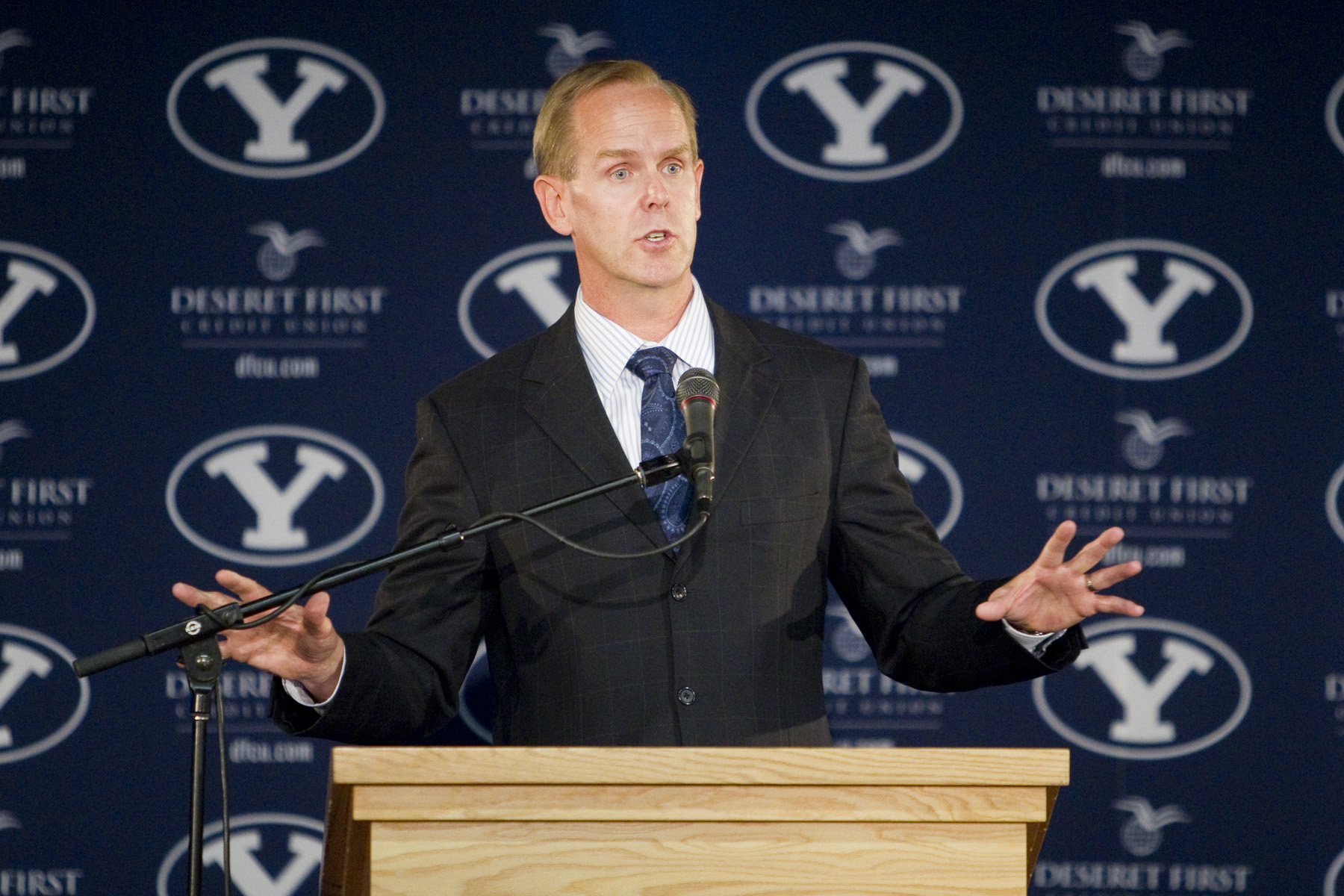
On Sept. 1, 2010, Holmoe stood before cameras and reporters to announce BYU’s intent to depart the Mountain West, charting a course for FBS independence in football and membership in the West Coast Conference for its Olympic sports.
BYU’s leap to independence was accompanied and only made possible by its reforged partnership with “the worldwide leader in sports.” Under its new contract with ESPN, BYU was promised a minimum of three home games each season carried on ESPN, ESPN2 or ABC, with additional home games televised on ESPNU.
“When we left, we left on those two pillars: exposure and access,” Holmoe said. “I think in the end, we got our fair share of exposure and access.”
With ESPN as its partner and Holmoe at the helm of scheduling compelling and challenging matchups, Cougar nation rediscovered its access to BYU football and the program was reunited with national exposure.


Through its 11 full seasons of independence, BYU has played games in all four continental U.S. time zones and visited six states for the first time. The Cougars have faced 23 first-time FBS opponents and will have played 55 games versus Power Five competition by the end of 2022. In the Cougars’ 12 seasons before independence, they faced a total of just 35 such opponents.
Since 2011, over 50 BYU games have registered at least 1 million viewers, with 23 surpassing 2 million and six soaring over 3 million.
BYU ranks No. 15 for most nationally televised games since 2011 with nearly eight per season for a total of 87. Only two other programs west of the Mississippi — Oklahoma and USC — have had more games on major national networks than BYU within that timeframe.
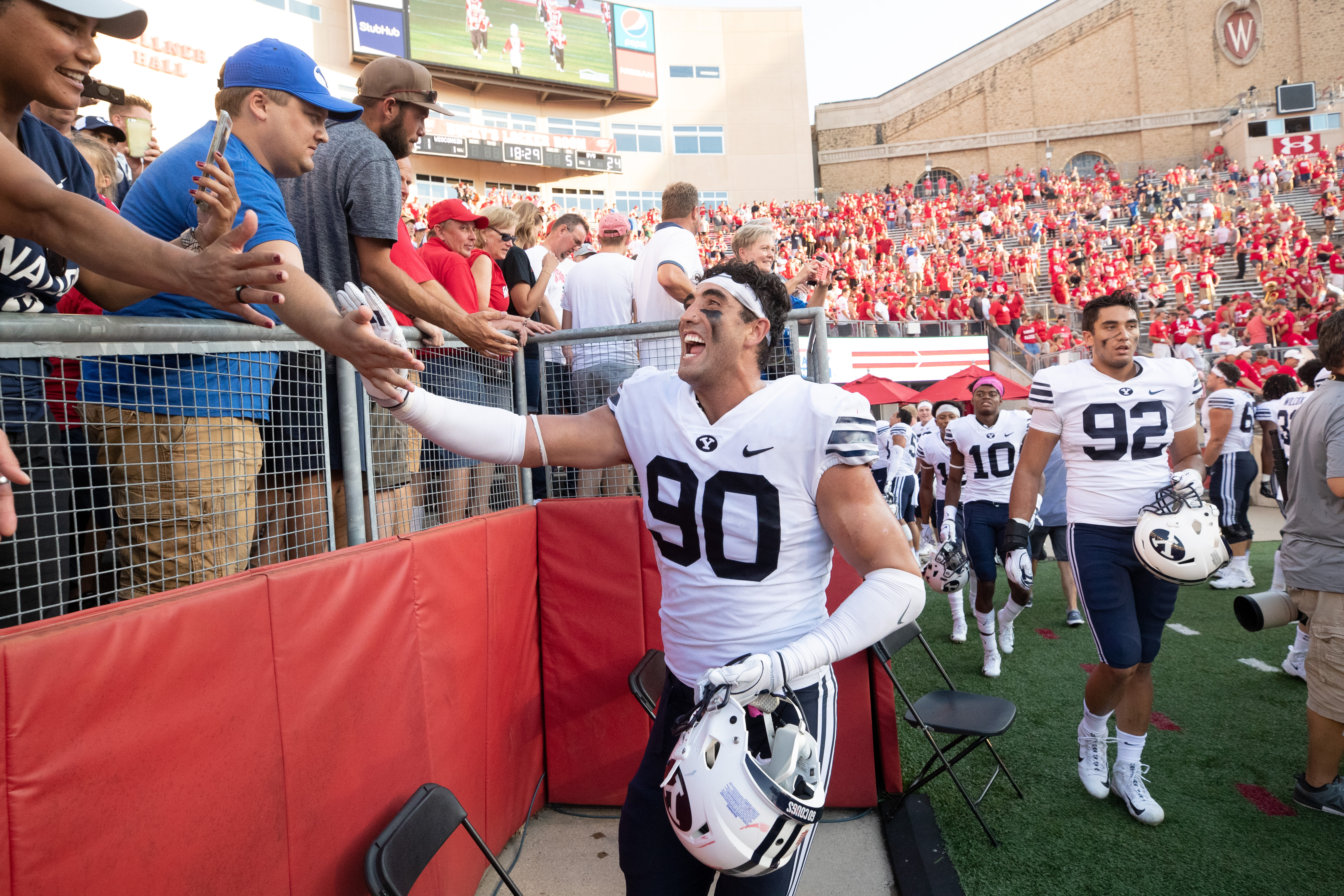



While the games are important, the impact of an ESPN partnership doesn’t end there.
“All of the promotional materials for your games during other shows, all of the appearances on SportsCenter and many of the other ESPN programs.. really helped us build back the BYU national brand,” Tittle said.
With increased access to Cougar football came increased presence and passion from Cougar nation.
No experience illustrates this better than that of BYU fans cheering on the Cougars against Georgia Southern on Nov. 20, 2021.
“If you’re not familiar with Statesboro, Georgia, it’s out in the middle of nowhere,” said Tiffany Bird, chairwoman of BYU Alumni’s Atlanta chapter. “It’s surrounded by peanut farms and cotton fields.”
Seeking to rally BYU fans to the relatively remote game, Bird worked with the Georgia Southern ticket office to purchase 2,000 seats for Cougar nation.
“They were expecting maybe like 200 BYU fans at most, so when I asked for 2,000, they were like, ‘Uh …,’ they weren’t quite sure how to respond to us.”
An estimated 10,000 BYU fans cheered on the Cougars as they beat Georgia Southern 34-17 in Statesboro.

“Anytime BYU comes out to Georgia, we try to make it a big deal, because we’re thirsty for the BYU spirit,” Bird said. “It’s more than just a college, it’s everything BYU represents.”
“Everything BYU represents.”
Bird’s statement points to a major underlying factor in BYU football’s drive for national exposure.
As the flagship educational institution of The Church of Jesus Christ of Latter-day Saints, BYU stands unique among universities and collegiate athletic programs. Students’ required adherence to an honor code and the department’s consistency in refraining from Sunday play are just a few of the examples underscoring BYU’s uniqueness.
Holmoe wants that uniqueness to play out on the biggest stages and under the brightest national spotlights.
“BYU athletics has the opportunity to represent The Church regularly,” Holmoe said. “People are going to see your teams, your games, how you compete, what you represent. It’s more than just a game.”
Derek Westra, The Church’s Director of Reputation Management, also sees BYU football as more than just a game, but a key flag bearer for The Church in the U.S.
“BYU sports has, historically, been one of the best exposure tools for The Church. People know that it’s associated with The Church. You’ve got other things like BYU Broadcasting and the Tabernacle Choir at Temple Square that are attempting to do a similar thing, but BYU and particularly BYU football is maybe one of the biggest levers The Church has in terms of recognizability and exposure.”
For a church and university cradled in the ideas of “penetrat[ing] every continent, visit[ing] every clime, sweep[ing] every country and sound[ing] in every ear,” exposure seems to be where the objectives of sport and faith meet.
For a church and university that embraces its uniqueness, what better path than independence, the most unique in all of college football?
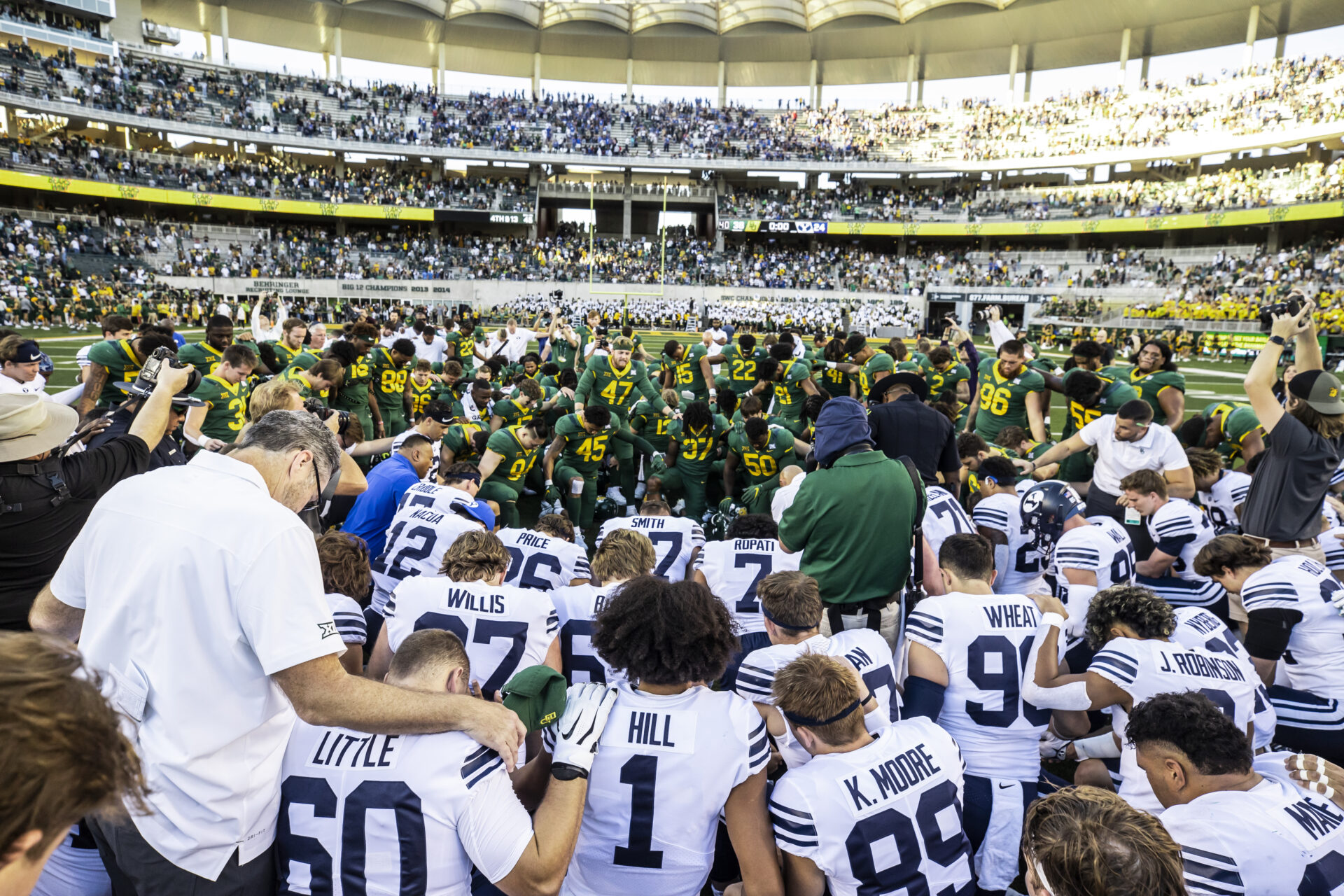
One Chapter Closes, Another Begins
It’s Monday, Sept. 7, 2020. Playgrounds are empty. Classrooms are virtual. Football stadiums are silent. It’s a pandemic-stricken 2020 football season and one would wonder if the very leaves would refuse to change their colors. It doesn’t feel like football season.
Yet, this night, there is football on ESPN. As an independent, BYU is among the few FBS teams preparing to cautiously proceed with its 2020 campaign. A schedule is cobbled together, and the Cougars find themselves facing Navy before an empty Marine Corps Memorial Stadium. While the venue may be empty, America’s homes certainly aren’t, and over a million viewers will tune-in to BYU’s 55-3 statement win in Annapolis.

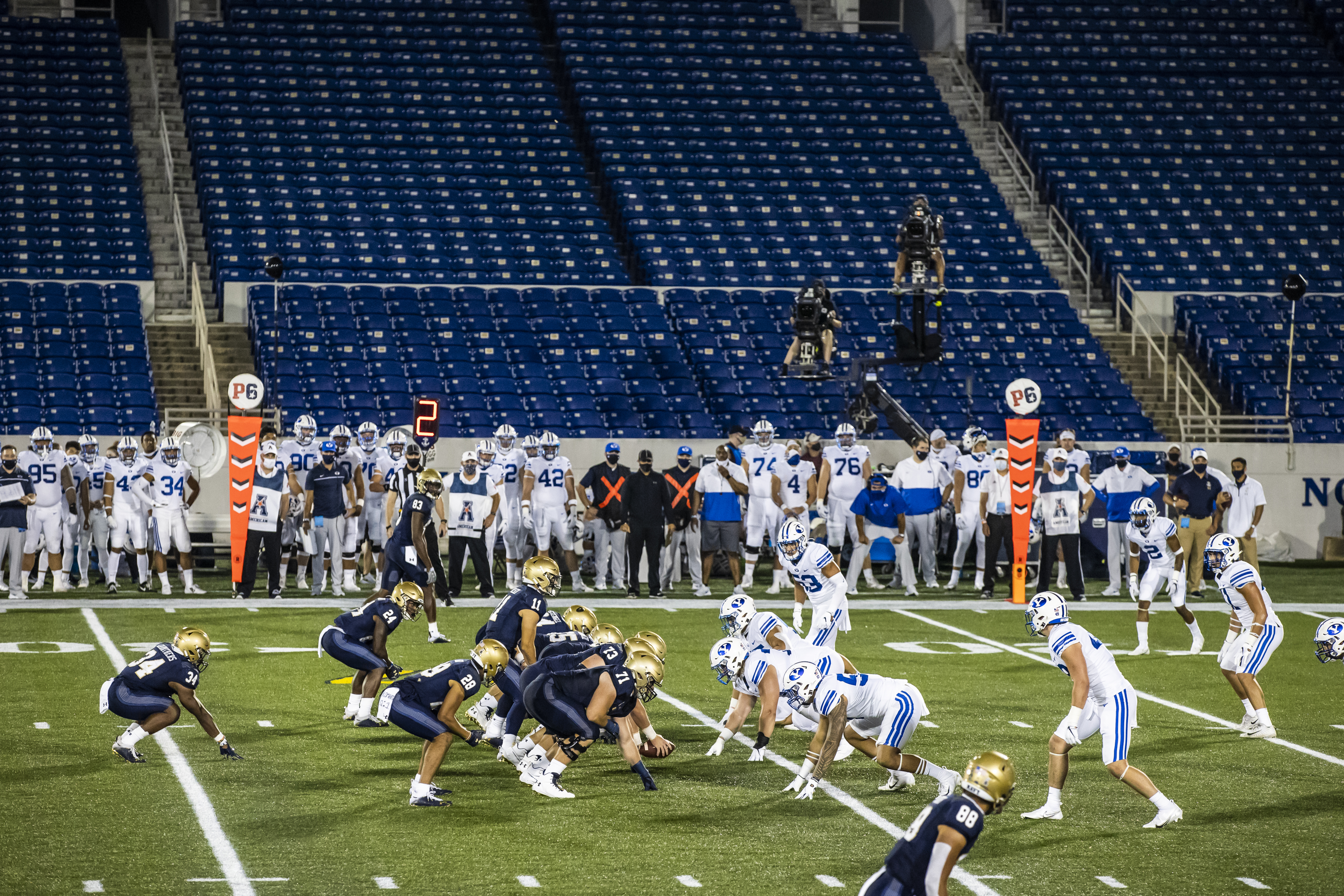
If there was ever a season to prove independence was worth it to the Cougars, it was 2020.
As one of the first teams to play that season in the Mountain and Pacific time zones, the Cougars took advantage of every broadcast and promotion ESPN offered.
BYU’s enhanced visibility was accompanied by a rapid rise in the top 25, a Heisman finalist in quarterback Zach Wilson and five 2021 NFL draft selections, including Wilson being picked second overall as BYU’s highest selection in program history.
“All of the promotional materials for your games during other shows, all of the appearances on SportsCenter and many of the other ESPN programs. That really helped us build back the BYU national brand.”
Tittle’s observation was never more true than in 2020. Just months after the exposure of 2020, BYU’s revitalized brand welcomed an invitation to the Big 12 Conference on Sept. 10, 2021.
“It was a little bit of BYU betting on itself,” said ESPN senior writer Pete Thamel at BYU football media day on June 22. “Obviously, a decade later, we can say that bet has paid off. They’re in the Big 12.”
While Holmoe is pleased with the nearly completed course of independence and the coming achievement of power conference membership, he doesn’t intend to rest now.
“If there was a book, this would be chapter 12 or 13: Transition,’” Holmoe said. “All of our attention right now is focusing on how we can get ourselves transitioning so we can have strength coming into the Big 12, instead of getting there and getting beat up. It would be foolish of us to look beyond this very important last year of transition.”
Maybe someday there will be a book. In another article at another time, Holmoe’s transition process may be analyzed. But for now, as independence winds to a close, BYU can look back and recognize how a bold move into an unknown football frontier allowed it to leverage its unique nature and tradition into unprecedented passion among its fans and exposure for its program and values.
Perhaps nothing summarizes this saga better than a quote from Elder Jeffrey R. Holland of the Quorum of the Twelve Apostles. Elder Holland applied the reference from the late nineteenth-century orator William Jennings Bryan to BYU’s pursuit of unique excellence.
One could apply it to its football independence as well.
“No one wants it to come to that [leaving the Mountain West] … but if it does, we will pursue our own destiny, a destiny [that] is not a matter of chance; [but largely] … a matter of choice; … not a thing to be waited for, [but] … a thing to be envisioned and achieved.”


